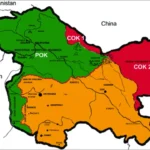May 21, 2025 | Tech Innovation Desk
D-Wave Systems Inc., a leading name in the quantum computing sector, has announced a series of significant advancements that signal a new chapter in the practical use of quantum technology. Known for its pioneering work in quantum annealing, the Canada-based company is now expanding its reach into gate-model quantum computing, bringing the power of quantum systems closer to solving complex, real-world problems.
As industries around the globe search for ways to optimize operations, accelerate research, and unlock new efficiencies, D-Wave’s developments offer promising solutions that are far beyond the capabilities of classical computing.
What Sets D-Wave Apart in the Quantum Race?
Unlike many competitors focused solely on gate-based quantum computers, D-Wave has gained recognition for developing commercial-grade quantum annealers, systems optimized for tackling combinatorial optimization problems such as logistics, scheduling, traffic flow, and machine learning.
In recent months, D-Wave introduced updates to its Advantage™ quantum system, the company’s most powerful quantum computer to date. With over 5,000 qubits and enhanced qubit connectivity, the Advantage system is designed to solve larger and more complex problems with higher accuracy.
Leap 2 Platform and Hybrid Solver Enhancements
D-Wave has also made substantial improvements to its Leap™ quantum cloud service, particularly with the Leap 2 platform. It now supports hybrid solvers that combine classical and quantum computing to deliver faster and more scalable performance.
These solvers are being actively used by businesses and researchers across logistics, manufacturing, pharmaceuticals, and finance to solve real-world optimization challenges—ranging from warehouse layout planning to portfolio optimization.
For example, a recent case study involving a multinational logistics company showcased how D-Wave’s hybrid solver reduced supply chain costs by 12% while improving delivery time estimates using a quantum-powered optimization model.
Progress in Gate-Based Quantum Systems
While D-Wave remains the only provider offering commercial quantum annealing services, the company is now aggressively pursuing gate-model quantum computing, a field dominated by companies like IBM, Google, and IonQ.
In 2025, D-Wave revealed promising experimental results with its early superconducting gate-model qubits, moving one step closer to achieving fault-tolerant quantum computing. The company’s approach includes integrating learnings from its annealing architecture to build more efficient and scalable gate-model systems.
Alan Baratz, CEO of D-Wave, commented:
“We’re expanding the boundaries of what quantum computing can do—not just in theory, but in practical, accessible ways that deliver business value today. Our dual approach with annealing and gate-based technologies allows us to address a wider range of use cases than any other provider.”
Real-World Use Cases Driving Adoption
Unlike traditional quantum prototypes still in the lab, D-Wave’s technology is already in use. Clients from around the world are applying quantum annealing to problems in:
- Manufacturing – For quality control, defect detection, and layout optimization.
- Finance – In portfolio risk assessment and fraud detection.
- Energy – For smart grid planning and energy distribution modeling.
- Pharma – To accelerate molecular simulation and drug discovery processes.
The adoption of quantum solutions by mainstream companies is a strong signal that the technology is transitioning from theoretical science to a practical tool.
What’s Next for D-Wave?
As part of its 2025 roadmap, D-Wave plans to launch a more advanced hybrid solver suite, additional APIs for developer access, and new educational initiatives to democratize quantum computing knowledge. The company is also expanding its ecosystem through partnerships with global universities, cloud providers, and enterprise clients.
D-Wave’s continued investment in both annealing and gate-based systems positions it as a unique player in the global quantum computing race, offering real-world performance today while building the foundation for tomorrow’s breakthroughs.
Conclusion
D-Wave’s recent achievements highlight its commitment to making quantum computing useful, usable, and commercially viable. As more businesses look for competitive advantages through high-performance computing, D-Wave’s technologies stand out for their maturity, flexibility, and real-world impact.





